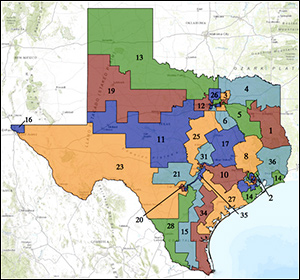By Jim Ellis
 Oct. 30, 2020 — The 2020 election cycle has been unique in many ways, but a series of significant decisions, typically through judicial rulings, will likely have a long-lasting effect upon the way the various states administer their elections.
Oct. 30, 2020 — The 2020 election cycle has been unique in many ways, but a series of significant decisions, typically through judicial rulings, will likely have a long-lasting effect upon the way the various states administer their elections.
Expanded early voting is likely here to stay. With more than 66 million people already voting through Wednesday, we can expect the states to continue with this relatively new process. Currently, only four states do not have some form of early voting.
Whether we see a continuance of the post-election ballot reception period may be another matter. There is likely to be controversy over this practice that 21 states will feature beginning next week. If the presidential race is close and gets bogged down in the political overtime, the negative aspects of counting votes that come in after the election could come to the forefront.
We have also seen changes in some states, most of which came in previous years, over their primary voting procedures. With reapportionment and redistricting on the political horizon, we are seeing states place measures on Tuesday’s ballot that could bring even more change to electoral systems around the country.
According to research presented from the University of Virginia’s Dr. Larry Sabato’s Crystal Ball publication and the Ballotpedia organization, voters in nine states will be deciding measures that could alter even further the way future elections are conducted. As we have seen develop, states adopting changes lead to further states following suit. Therefore, if many of the measures receive voter approval Tuesday, other states may also begin adopting some of these practices.
We start with states potentially changing their primary systems to a variation of the jungle primary system. Currently, Louisiana, where the procedure began, California, and Washington use the top-two qualifying system. In those states, all candidates are placed on the same primary ballot and the top two vote-getters advance to the general election irrespective of political party affiliation. Louisiana can elect a candidate outright if he or she receives majority support in the primary election because the state schedules the primary concurrently with the national general election.
Voters in Florida have a ballot proposition to decide if they want their state to adopt the jungle primary system. The Sunshine State voters are also considering a proposition that would allow changes voted through initiative only to take effect if the measure passes in two general elections. Therefore, should this latter idea attain approval, it, and all of the other passed measures, would be delayed until they again pass in a subsequent election.
Alaska voters are looking at another variation of the jungle primary. They are considering a measure where the primary would produce four finishers, thus setting up multi-candidate general elections.






